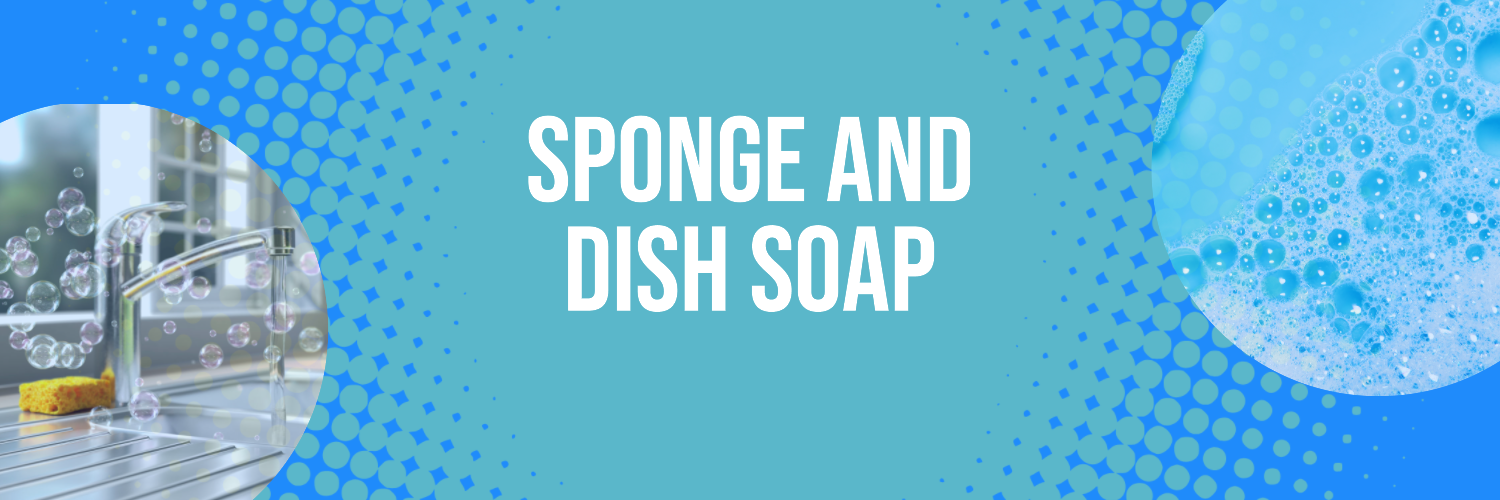Granite is a popular choice for countertops and other surfaces due to its durability and natural beauty. However, like any other material, it requires regular cleaning and maintenance to keep it looking its best. In this article, we will discuss the best practices and techniques for cleaning granite surfaces effectively.
Prep and Gather Materials
Before we delve into the cleaning process, it is important to understand the characteristics of granite. Granite is a porous material, which means it can absorb liquids and stains if not properly sealed. Therefore, it is crucial to ensure that your granite surface is adequately sealed before you begin the cleaning process. If you do not know if your granite has been sealed previously you can pour a small amount of water on the surface, smear it around a little. If the water beads up the granite has been sealed. If the water soaks into the stone, then it has not been sealed. If the granite has not been sealed wait till after it is properly cleaned before sealing.
To clean granite surfaces, you will need a few basic supplies. These include a soft microfiber cloth or sponge, warm water, a mild dish soap or granite cleaner, and a granite sealer (if necessary). Avoid using abrasive cleaners, acidic substances, or harsh chemicals, as they can damage the surface of the granite. Cleaners like Soft Scrub are not really soft, there is a grit material in the product that will scuff the surface. The best practice is warm water and mild dish soap such as Dawn. Also, be sure to use only soft rag or sponge, scratch pads or SOS pads WILL SCUFF the surface.

Prep Surface and Cleaning
The first step is to use a razor blade positioned at or about a 30-degree angle to help remove dried foods that have been inadvertently dripped, splashed, or dropped on surface and allowed to dry.
The next step in cleaning granite is to remove any loose dirt or debris from the surface. Use a soft cloth or sponge to wipe away any crumbs or dust. This will prevent scratching the surface during the cleaning process.
Next, prepare a cleaning solution by mixing warm water with a small amount of mild dish soap or a granite-specific cleaner. Avoid using vinegar, lemon juice, or any acidic substances, as they can etch the surface of the granite. Dip the cloth or sponge into the cleaning solution and wring out any excess liquid.

Gently wipe the granite surface with a damp cloth or sponge, making sure to cover the entire area. For stubborn stains or dried-on spills, you may need to apply a bit more pressure. However, be careful not to scrub too vigorously, as this can cause scratches.
Once you have cleaned the entire surface, rinse the cloth or sponge thoroughly to remove any soap residue. Wipe the granite surface again with clean water to ensure all traces of the cleaning solution are removed.
After cleaning, it is important to dry the granite surface thoroughly with towel to prevent water spots or streaks. Use a clean, dry microfiber cloth to wipe away any excess moisture. Pay special attention to the edges and corners, as water tends to accumulate in these areas.
Sealing Instructions
If your granite surface is not adequately sealed or if the sealant has worn off over time, it is recommended to apply a granite impregnating sealer. A granite sealer helps to protect the surface from stains and spills by creating a barrier that repels liquids. Follow the manufacturer’s instructions for applying the sealer, and make sure to allow sufficient drying time before using the surface again.

It is particularly important to make sure you have true granite before sealing. There are some stones sold as granite or look like granite that are not in fact granite. There is stone called quartzite that is durable like granite, but certain sealers can irreversibly change the colors of the quartzite. For instance, the purples and blues or other colors may turn brown and therefore ruin the look permanently. Countertops sold as natural quartz surfacing are not cut out of the ground like granite, it is manufactured with natural quartz powders and resin formed into slabs. Natural quartz surfaces are also different from quartzite. Quartzite is a natural stone cut out from the ground like granite but is not granite.
It is important to test a small inconspicuous area or if you have a sample of the same type of granite or sometimes the fabricator will give the customer the actual sink cutout to keep. If you have either of these, you can seal them to make sure there are no ill effects to the stone. Also, when you seal your granite, it will look darker for several hours while it cures, this is normal, and your granite will return to the original color and shade after the sealer is fully cured, normally overnight.
There are some sealers that are enhancers which change the shade permanently so be sure the type of sealer you buy is not one of these.
In addition to regular cleaning, there are a few preventive measures you can take to keep your granite surfaces looking their best. Use coasters or placemats under glasses, bottles, or cans to prevent water rings or stains. Use trivets or hot pads to protect the granite.
In conclusion, cleaning granite surfaces is a relatively effortless process that requires a few basic supplies and proper techniques. By following the steps outlined in this article, you can keep your granite countertops and surfaces clean and well-maintained. Remember to avoid abrasive cleaners, acidic substances, and harsh chemicals, and always check the manufacturer’s recommendations for cleaning and maintenance. With regular care, your granite surfaces will continue to shine and enhance the beauty of your home for years to come.